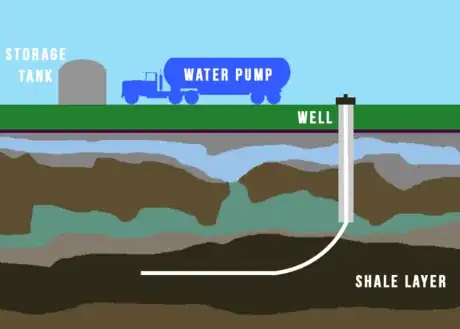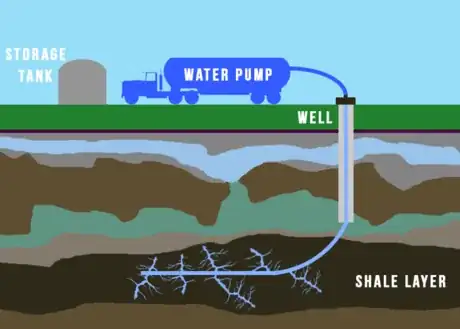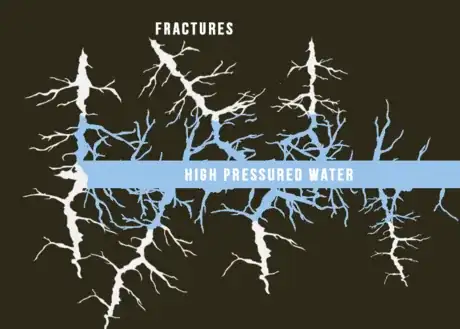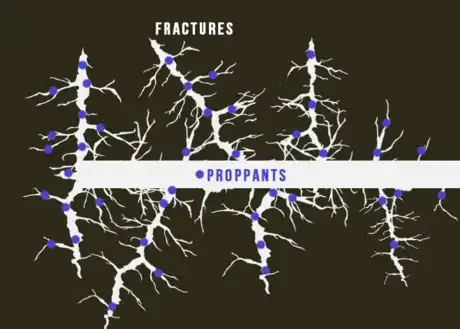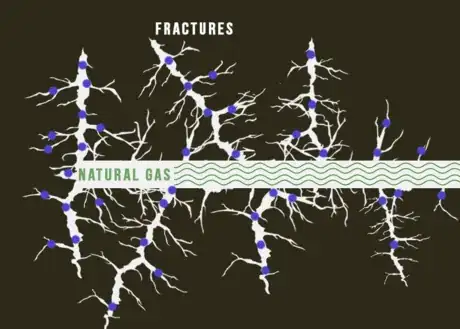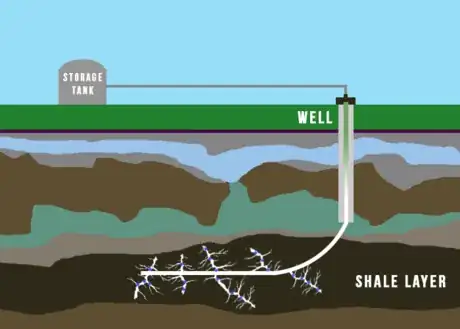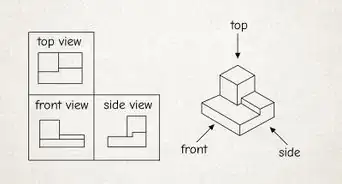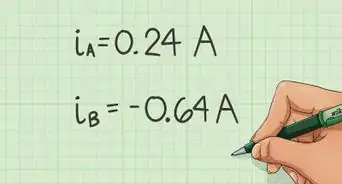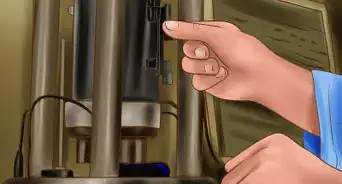wikiHow is a “wiki,” similar to Wikipedia, which means that many of our articles are co-written by multiple authors. To create this article, 10 people, some anonymous, worked to edit and improve it over time.
This article has been viewed 45,709 times.
Learn more...
There is a lot of controversy today surrounding hydraulic fracturing, better known as fracking. Many people do not understand the process, but if you want to take a stance in the debate, it helps to understand what fracking actually is. This includes its impact on the natural environment, as well as whether the extracted gas is worth the risk. In order to better make an educated decision on your stance, here is a quick overview of the steps of hydraulic fracturing.
Steps
-
1Drill a well. A well is drilled vertically into the ground until it reaches the permeable shale layers.[1]
- Once the digging has hit the gas rich layers, redirect it horizontally into the rock layers. The digging is now parallel to the ground above, but at an immense depth below the surface (anywhere around 7,000 to 12,000 feet). The well is surrounded by a protective steel casing, and it is surrounded by both steel and concrete when it is drilled past the underground aquifer level.[2]
- Within the shale are small holes and fissures wherein the natural gases lie. These cracks are going to need to be expanded via pressure.
-
2Pump in high pressured fracking fluid. This fracking fluid contains a mixture of water, sand, and 5-10 chemicals ranging in toxicity.[3] Feed high pressured fracking fluid into the well via a pumping tank.
- The high pressure and intensity of the fracking fluid rushes into the shale layers, cracks, and crevices.
- Floating throughout the water are high pressured sand and many chemicals. Because of the high pressure of the fracking fluids during hydraulic fracturing, the chemicals are forced into the cracks and crevices of the shale rock.[4]
Advertisement -
3Fracture the shale rock. The internal pressure of the shale rock causes the fluid to make its way back to the surface.
- Collect the used fluid in a designated tank, where it will later be transferred to a treatment plant.[5]
- As the fluid retreats, the cracks and crevices of the shale rock will attempt to close because it does not have the pressure holding open the cracks anymore.
-
4Prop open the fractures. Leave the proppants behind in the cracks and fractures after the water has retreated. As the name implies, the proppants “prop” open the shale fractures, keeping them from closing off again.
- Because of the immense pressure of the surrounding shale rock, fracturing proppants must be extremely strong and have a high crush factor.
-
5Collect the natural gas. The once trapped shale gas is now able to flow free from the shale layers because it has remained propped open by high crush factor proppants.
- The shale flows out from the fissures and into the well.
-
6Transfer the natural gas. From the well, the natural gas is transferred to nearby storage tanks until it is piped to market.[6]
Community Q&A
-
QuestionHow long does the fracking process take?
 Community AnswerThe fracking part itself can take about 2-3 days, and the drilling 10-14.
Community AnswerThe fracking part itself can take about 2-3 days, and the drilling 10-14. -
QuestionWhat happens when fracking is finished? Are the water and chemicals pumped out and replaced, or is it just left there?
 Community AnswerWhen the fracking is finished, the water mixture is pumped out and then stored in open pools. The water solution can only be used once.
Community AnswerWhen the fracking is finished, the water mixture is pumped out and then stored in open pools. The water solution can only be used once. -
QuestionWhat are the chemicals used when doing the pressurized liquid?
 Community AnswerFracturing fluid contains a mixture of water, crosslinkers, breakers, additives, stabilizers and propellant.
Community AnswerFracturing fluid contains a mixture of water, crosslinkers, breakers, additives, stabilizers and propellant.
References
- ↑ https://www.livescience.com/34464-what-is-fracking.html
- ↑ https://www.api.org/oil-and-natural-gas/energy-primers/hydraulic-fracturing
- ↑ https://www.cred.org/whats-fracking-fluid/
- ↑ https://www.nationalgeographic.org/media/how-hydraulic-fracturing-works/
- ↑ https://www.chemistryviews.org/details/education/1316813/What_is_Shale_Gas_How_Does_Fracking_Work.html
- ↑ https://www.chicagotribune.com/business/chi-how-fracking-works-html-story-htmlstory.html
